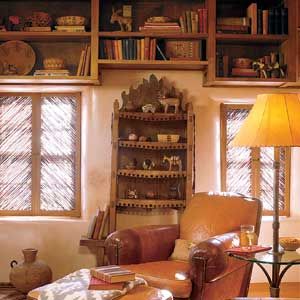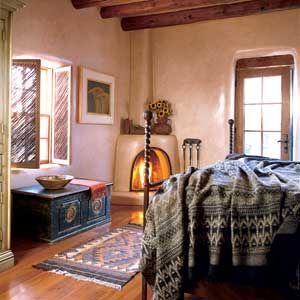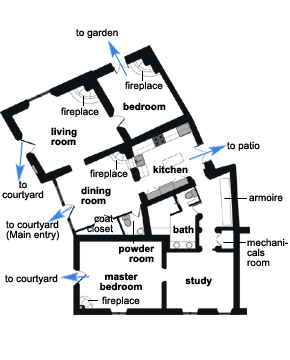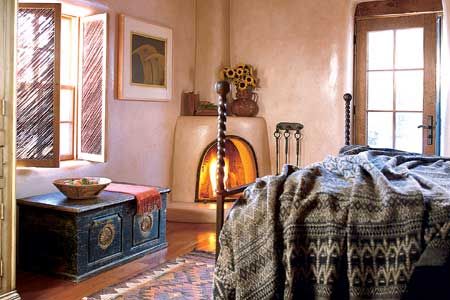Adobe construction has been a cornerstone of Southwestern architecture for centuries, blending durability with natural beauty. This ancient building technique uses sun-dried mud bricks to create structures that withstand the test of time while harmonizing with the landscape. From the historic homes of Santa Fe to modern eco-friendly designs, adobe continues to captivate builders and homeowners alike.
In this guide, we’ll explore the rich history, unique characteristics, and enduring appeal of adobe construction.

What Is Adobe and How Is It Made?
Adobe is a natural building material made from earth, water, and organic materials. Builders have practiced this construction method for thousands of years, and it remains relevant in modern architecture.
The History of Adobe Construction
Adobe construction dates back to ancient civilizations in the Middle East and the Americas. In the Southwestern United States, Native American pueblos and Spanish colonial buildings showcase the longevity of this technique.
The durability of adobe is evident in the centuries-old structures that have long weathered the harsh desert climate.
The Components of Adobe Bricks
Adobe bricks consist of a mixture of soil, water, and fibrous organic material such as straw or grass. The soil typically contains clay, which acts as a binder, and sand, which provides structural stability. The organic fibers help prevent cracking as the bricks dry and strengthen the finished product.
The Adobe Brick-Making Process
The process of making adobe bricks has evolved very little over the generations.
Builders mix the components in a pit to form mud, which they then pour into wooden molds and leave to dry in the sun.
Once the mud hardens, the bricks are removed from the molds and stacked on end to finish drying, a process that can take several weeks, depending on climate conditions.
Variations in Adobe-Making Techniques
Different regions have their unique variations of adobe brick-making techniques. In some areas, builders add lime to the mix for better durability. In others, builders add manure or cactus juice to increase the bricks’ strength and water resistance.
These regional adaptations speak to adobe’s versatility and the ingenuity of traditional builders in optimizing the material for their specific environments.

Durability and Sustainability
Adobe homes are popular for their longevity and eco-friendly properties. These structures offer unique benefits that appeal to environmentally conscious homeowners and those seeking a connection to traditional building methods.
Advantages of Adobe Construction
Adobe boasts excellent thermal mass, helping to regulate indoor temperatures naturally. The thick walls keep interiors cool in summer and warm in winter, reducing the need for artificial heating and cooling. Adobe is also fire-resistant. A
Additionally, the use of local materials and minimal processing makes adobe an environmentally sustainable choice.
Challenges and Maintenance Requirements
While durable, adobe structures require regular maintenance to prevent water damage. Proper roof overhangs and foundation drainage protect the walls from moisture. Periodic replastering of exterior walls helps maintain their integrity. Additional waterproofing measures may be necessary in areas with high rainfall or humidity to ensure the structure’s longevity.
Eco-Friendly Features of Adobe Homes
One of the standout features of adobe homes is their eco-friendliness. Adobe construction produces significantly fewer carbon emissions than conventional building materials such as concrete and steel.
The use of natural and locally sourced materials reduces a building project’s ecological footprint. Furthermore, the end-of-life impact of adobe buildings is minimal, as the materials biodegrade naturally, without requiring chemicals or artificial methods to break down.
Restoring and Renovating Adobe Structures
Restoring an adobe home requires specialized knowledge and techniques to preserve its historical integrity while adapting it for modern living.
Assessing the Condition of an Adobe Building
Before beginning any restoration work, we recommend getting a thorough assessment of the building. Bill Moxey, an experienced adobe restoration expert, notes, “You have to do a good job for something to endure that long.”
Inspectors look for signs of water damage, structural instability, and previous repairs that may not align with traditional methods.
Common Restoration Techniques
Restoration often involves carefully removing layers of plaster to expose the original adobe bricks. Restoration specialists replace damaged bricks with new ones made using traditional methods.
Structural elements like vigas may need reinforcement or replacement. As Moxey recalls from a project, “With the tons of earth gone, the vigas rebounded almost a foot. “
Modernizing Adobe Homes While Preserving Character
Updating adobe homes for modern living requires a delicate balance. Architect Sharon Woods explains, “It was a matter of reintroducing the integrity of the structure and updating it.”
Modernization might involve adding plumbing and electrical systems, improving insulation, or creating more open floor plans while maintaining the home’s original character.
Benefits of Professional Involvement in Restoration
Adobe restoration is not a DIY project, and we strongly recommend hiring a trained professional. Trained experts bring a wealth of experience and a deep understanding of traditional techniques. Their knowledge ensures that restorations are more than surface-level fixes. Professionals can also identify opportunities to integrate modern amenities without compromising the structure’s historical value.

The Cost Considerations of Adobe Construction
Building or renovating an adobe home involves unique cost factors that differ from conventional construction methods.
Factors Affecting Adobe Building Costs
The cost of adobe construction can vary widely depending on the availability of materials, labor rates, and the complexity of the design. In areas where adobe construction is common, costs may be comparable to traditional building methods. However, expenses can increase significantly in regions where specialized skills are scarce.
Comparing Adobe to Other Building Materials
While the initial costs of adobe construction may be higher in some areas, the long-term energy savings can offset this investment. Adobe homes typically require less energy for heating and cooling, leading to lower utility bills over time. Additionally, the durability of adobe can result in reduced maintenance costs compared to some conventional building materials.
Cost-Saving Tips for Adobe Construction
Homeowners interested in adobe construction can implement several cost-saving strategies. Using local materials reduces transportation costs and supports the local economy. Engaging local builders with experience in adobe construction can streamline the building process and reduce labor expenses.
Adobe vs. Pueblo Architecture: Understanding the Differences
While often used interchangeably, adobe and Pueblo architecture have distinct characteristics that set them apart.
Architectural Styles
Adobe architecture encompasses a broader range of styles, including Spanish Colonial and Territorial.
Conversely, Pueblo architecture refers specifically to the multi-story communal dwellings of indigenous Southwestern peoples.
Pueblo Revival style, popular in the early 20th century, incorporates elements of both traditional Pueblo and Spanish Colonial adobe architecture.
Construction Methods
Both adobe and Pueblo structures use earth-based materials, but the construction methods differ.
Adobe buildings feature individual sun-dried bricks, while traditional Pueblo structures often use a technique called “puddled adobe.” Puddling is a repetitive process of layering wet mud into large molds, allowing each layer to dry before pouring the next.
Cultural Significance
Pueblo architecture has deep roots in Native American culture, with specific design elements holding symbolic meaning.
While influenced by indigenous building techniques, Adobe architecture reflects Spanish colonial influences and has evolved to incorporate various cultural elements over time.
Preservation Efforts for Both Styles
Many see preserving adobe and Pueblo architecture as critical in maintaining cultural heritages.
Preservation initiatives often involve collaboration between government agencies, non-profit organizations, and local communities. Funding for these projects helps ensure that future generations can learn from and appreciate these traditional building styles.
Educational programs and workshops also play vital roles in keeping traditional knowledge and skills alive.

The Future of Adobe in Modern Architecture
Adobe construction continues to evolve, finding new applications in contemporary design and sustainable building practices.
Innovations in Adobe Technology
Modern innovations are enhancing the performance of adobe buildings.
Stabilized adobe, which incorporates small amounts of cement or asphalt emulsion, offers improved water resistance.
Hydraulic-pressed compressed earth blocks provide denser, more uniform bricks.
These advancements address some of the traditional challenges of adobe construction while maintaining its sustainable qualities.
Incorporating Adobe in Contemporary Design
Its natural aesthetics and thermal properties make adobe an attractive option for those seeking sustainable, energy-efficient buildings with a connection to traditional craftsmanship.
Accordingly, architects and designers are finding creative ways to integrate adobe into modern structures—from sleek minimalist homes to eco-resorts.
Our Conclusion
While maintaining and modernizing adobe structures can be challenging, their sustainability, durability, and unique aesthetic appeal make them a compelling choice for those seeking an alternative to conventional construction methods.
As we look to the future, adobe’s role in sustainable architecture will likely grow. By blending time-honored techniques with modern innovations, adobe construction offers a path forward that honors the past while meeting the needs of contemporary living.
Where To Find It:
Architect/builder: Sharon Woods
Woods Architect-Builder Inc.
Santa Fe, NM
505-988-2413
woodsbuilders.com
Superintendent: Bill Moxey
Woods Architect-Builder Inc.
Plaster: GMB Construction
Santa Fe, NM
505-471-8162
Exterior doors and windows: Pella Windows and Doors
Santa Fe, NM
505-474-4112
pella.com
Framing: TPW Construction
Rio Rancho, NM
505-991-2808
Exterior and interior lighting, dining chairs, fireplace tools, screens and log holders, and candlesticks:
Christopher Thomson Studio
Ilfeld, NM
800-726-0145
ctiron.com
Range hood: Vent-A-Hood
Richardson, TX
800-331-2492
ventahood.com
Range: Viking Range Corp.
Greenwood, MS
888-845-4641
vikingrange.com
Refrigerator: Sub-Zero Freezer Co.
Madison, WI
800-222-7820
subzero.com
Powder-room table and medicine cabinet: Antique Warehouse
Santa Fe, NM
505-984-1159
antiquewarehouse-santefe.com
Sombraje shutters (interior): Ernest Thompson & Co.
Albuquerque, NM
800-568-2344
sombraje.com and ernestthompson.com

